Prolonged space flight-induced alterations in the structure and function of human skeletal muscle fibres
- PMID: 20660569
- PMCID: PMC2988519
- DOI: 10.1113/jphysiol.2010.188508
Prolonged space flight-induced alterations in the structure and function of human skeletal muscle fibres
Abstract
The primary goal of this study was to determine the effects of prolonged space flight (180 days) on the structure and function of slow and fast fibres in human skeletal muscle. Biopsies were obtained from the gastrocnemius and soleus muscles of nine International Space Station crew members 45 days pre- and on landing day (R+0) post-flight. The main findings were that prolonged weightlessness produced substantial loss of fibre mass, force and power with the hierarchy of the effects being soleus type I > soleus type II > gastrocnemius type I > gastrocnemius type II. Structurally, the quantitatively most important adaptation was fibre atrophy, which averaged 20% in the soleus type I fibres (98 to 79 μm diameter). Atrophy was the main contributor to the loss of peak force (P(0)), which for the soleus type I fibre declined 35% from 0.86 to 0.56 mN. The percentage decrease in fibre diameter was correlated with the initial pre-flight fibre size (r = 0.87), inversely with the amount of treadmill running (r = 0.68), and was associated with an increase in thin filament density (r = 0.92). The latter correlated with reduced maximal velocity (V(0)) (r = 0.51), and is likely to have contributed to the 21 and 18% decline in V(0) in the soleus and gastrocnemius type I fibres. Peak power was depressed in all fibre types with the greatest loss (55%) in the soleus. An obvious conclusion is that the exercise countermeasures employed were incapable of providing the high intensity needed to adequately protect fibre and muscle mass, and that the crew's ability to perform strenuous exercise might be seriously compromised. Our results highlight the need to study new exercise programmes on the ISS that employ high resistance and contractions over a wide range of motion to mimic the range occurring in Earth's 1 g environment.
Figures

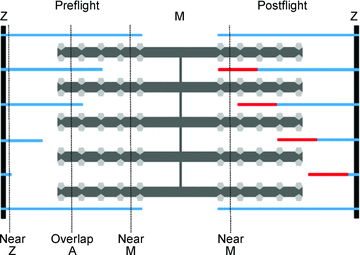
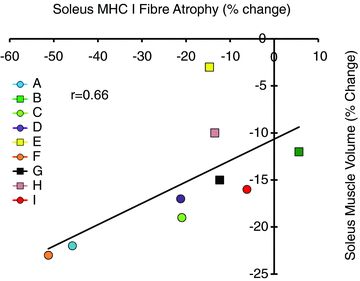
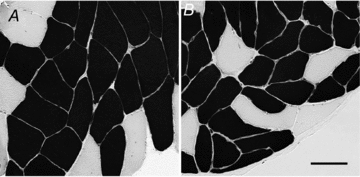
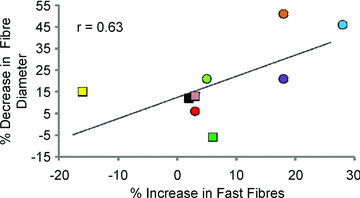


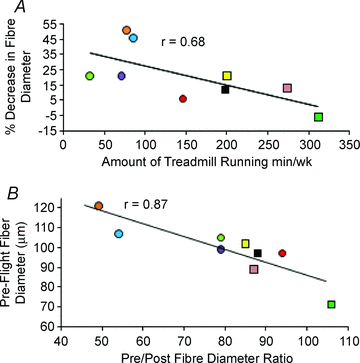



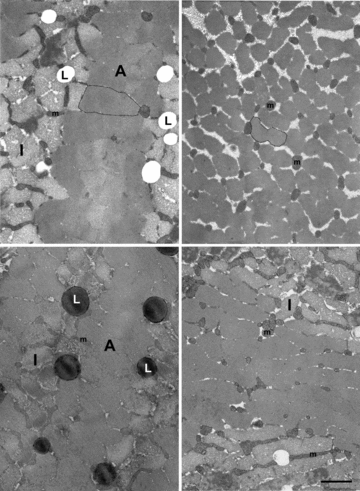
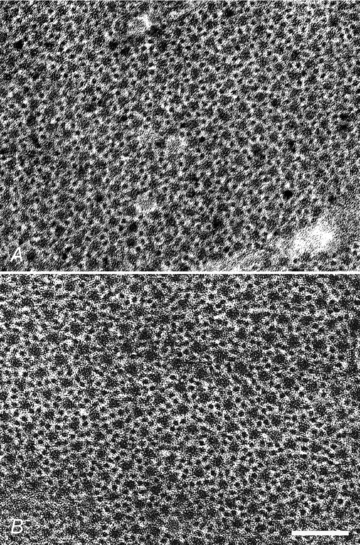


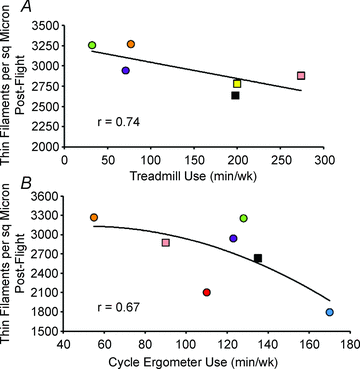
Comment in
-
Wasting away in Mars-Aritaville.J Physiol. 2010 Nov 1;588(Pt 21):4071. doi: 10.1113/jphysiol.2010.198861. J Physiol. 2010. PMID: 21037316 Free PMC article. No abstract available.
References
-
- Antonutto G, Capelli C, Girardis M, Zamparo P, di Prampero PE. Effects of microgravity on maximal power of lower limbs during very short efforts in humans. J Appl Physiol. 1999;86:85–92. - PubMed
-
- Bergstrom J. Muscle electrolytes in man. Scand J Clin Lab Invest. 1962;14(Suppl 68):7–110. - PubMed
-
- Burkholder TJ, Lieber RL. Sarcomere length operating range of vertebrate muscles during movement. J Exp Biol. 2001;204:1529–1536. - PubMed
Publication types
MeSH terms
LinkOut - more resources
Full Text Sources
Medical

